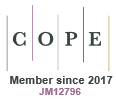Editors’ page
Sara Maroske A * and Ian D. Rae B *A Royal Botanic Gardens Melbourne, Birdwood Ave, South Yarra, Vic. 3141, Australia.
B University of Melbourne, Parkville, Vic. 3010, Australia.
Historical Records of Australian Science 34(1) iii-iv https://doi.org/10.1071/HR22019
Published: 30 January 2023
© 2023 The Author(s) (or their employer(s)). Published by CSIRO Publishing on behalf of the Australian Academy of Science. This is an open access article distributed under the Creative Commons Attribution-NonCommercial-NoDerivatives 4.0 International License (CC BY-NC-ND)
This issue contains four historical articles, three of them ‘open access’ under the recently instituted ‘read and publish’ agreements between CSIRO and Australian institutions, and the fourth as the Editors’ Choice for this issue. The articles come in two pairs, one of which deals with the central Australian laboratory established by CSIRO, and the other with the history of Australian coral reef science. There is just a single biographical memoir in this issue, although many more are in the pipeline, and as usual we publish our book reviews and the annual bibliography of the history of Australian science.
The CSIRO laboratory was established at Alice Springs in 1953 to support agronomic and pastoral uses in the semi-arid region. ‘Making the desert bloom’ was never a realistic aim, and research soon turned to more modest uses such as cattle grazing. The second of these articles describes how monitoring studies led to conservation, and socio-ecological considerations to Aboriginal livelihoods and wellbeing of country. The laboratory closed in 2018.
The Great Barrier Reef Committee (GBRC) was formed in 1922, and the history of its first 60 years—it was disbanded in 1982—was written by Dorothy Hill and published in Historical Records of Australian Science in 1984. Its successor, the Australian Coral Reef Society, has continued on a broader canvas to promote the preservation and protection of our coral reefs through the sharing of scientific information and through advocacy. In the sister article, the contributions of ten women to coral reef science—one of whom, of course, was Dorothy Hill (1907–97)—is celebrated, with outlines given of the women’s careers and photographs of them at work.
Guy White, the subject of the biographical memoir, devoted his scientific life to the study of materials, mainly metals, at very low temperatures. This was part of one of the strengths of Australian science in condensed matter physics and solid-state chemistry, but nonetheless White’s particular interest may seem arcane until one realises that the data he and others generated are of vital importance to the behaviour of materials in outer space where ambient (if we can call them that) temperatures are extremely low.
The five book reviews compiled by book review editor Martin Bush, although modest in number, traverse the usual range of Australian science that moves authors to write books. Two of the books are about astronomy, both dealing with the ways that Australia’s original astronomers read the stars and retained knowledge in oral traditions. There are two books about Antarctica. The first deals with Australia’s scientific, literary, historical and environmental involvement with the southern-most continent, in what our reviewer feels will become the definitive account. The second is mostly a ‘biography’ of the research vessel Aurora Australis. Finally there is a biography of plant biologist Dennis Carr that includes parts of his own autobiographies alongside what others thought about him and his work.
The bibliography of the history of Australian science has a fascinating history of its own. Our journal began publication in 1966 as Records of the Australian Academy of Science, with an irregular publication schedule. With publication of volume 5 in 1980, the name was changed to Historical Records of Australian Science (HRAS), and the scope of the journal was broadened, adding book reviews and a bibliography of the history of Australian science, the latter compiled annually by Laurie Carlson, a library staff member at Deakin University. Laurie’s last bibliography was published in volume 14 (2002). His successor was John Horacek, a senior fellow in history and philosophy at science at the University of Melbourne, with his last bibliography (for 2006) being published in vol 18 (2007). Helen M. Cohn, then library manager at Royal Botanic Gardens Victoria, took over and has continued to this day.
From the late 1990s, the content of the bibliography was picked up by Australian Science Archives Project, led by Dr Gavan McCarthy (University of Melbourne) for its ‘Bright Sparcs’ compendium that in due course morphed into the Encyclopedia of Australian Science. From Helen’s time the data were entered first into Bright Sparcs and reformatted for HRAS. Gavan and Helen are now both at the Centre for Transformative Innovation Research at Swinburne University of Technology, where the encyclopedia has become the Encyclopedia of Australian Science and Innovation and the same text is used in the Encyclopedia and HRAS.


